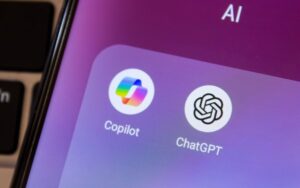Politeness May Have Consequences for OpenAI

Understanding Politeness in Interactions with AI
A Curious Inquiry
Recently, a user on X (formerly Twitter) raised an intriguing question about the potential costs incurred by OpenAI related to users expressing politeness—specifically, the frequency of saying “please” and “thank you.” This offbeat inquiry caught the attention of OpenAI’s CEO, Sam Altman, who responded lightheartedly that the total would likely amount to “tens of millions of dollars well spent— you never know.” His comment sparked interest in whether being polite to AI tools, such as ChatGPT, is simply a quirky habit or serves a practical purpose.
The Impact of Politeness on AI Responses
Insights from Experts
While it may seem odd to consider the implications of politeness in AI interactions, experts believe there is more to it than merely being courteous. Kurt Beavers, a design team director for Microsoft Copilot, noted that employing polite language when engaging with AI can influence the quality of responses generated by the model. He explained that when an AI detects politeness, it tends to mirror that tone in its replies, which could lead to more positive and respectful interactions.
Why Your Tone Matters
Using polite language can help in various ways:
- Sets the Mood: Politeness can set a friendly and cooperative atmosphere during the interaction.
- Enhances Engagement: Users might find themselves more engaged when the conversation feels pleasant and respectful.
- Encourages Better Responses: When AI perceives politeness, it may generate responses that are more in line with the user’s tone—leading to improved conversation quality.
The Case for Just Being Yourself
Despite the benefits of politeness, there are also instances where using blunt language or even profanity can be effective. Some users might feel that a direct approach can convey their emotions more clearly. In certain contexts, like querying technical issues or seeking urgent assistance, a straightforward tone might yield quicker and more precise results.
The Broader Perspective on AI Interactions
Understanding AI Behavior
AI conversational models, including ChatGPT, are designed to analyze various cues from users. This includes elements such as tone, context, and even sarcasm. By understanding how AI interacts with different styles of communication, users can adapt their approach for optimal outcomes.
The Balance Between Politeness and Authenticity
It’s essential to find a balance between being polite and staying true to yourself. Some people might feel uncomfortable adhering strictly to politeness norms, while others enjoy it. Recognizing this diversity in communication styles can shape better user experiences with AI.
Conclusion: A Personal Choice
Ultimately, whether to use polite language or a more casual tone when interacting with AI tools is a personal choice. Engaging with AI can be effective across various communication styles, and the key is to adapt your approach based on context and desired outcomes. So, if you enjoy saying "please" and "thank you" to an AI, go ahead; it might just lead to a more pleasant interaction. However, if you prefer a more straightforward approach, that can also be just as effective. The versatility of human communication adds richness to our interactions with AI.






